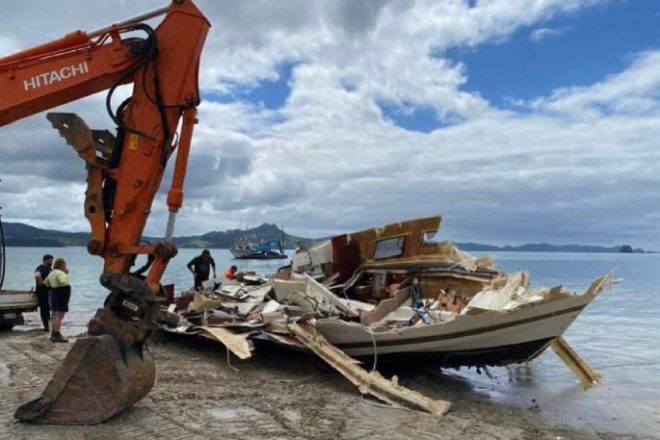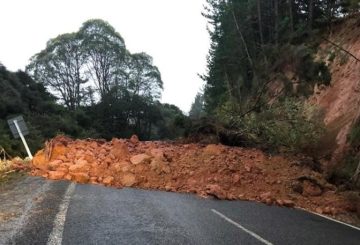Waikato Regional Council inihayag ang matagumpay na pagbawi ng isang 50-foot vessel na lumubog sa Mercury Bay matapos banggaan sa mga bato malapit sa Motukorure Island (tinutukoy din bilang Center Island) noong nakaraang linggo. Sa kabutihang palad, kapwa ang skipper at pasahero ay lumitaw mula sa insidente nang walang pinsala. Gayunpaman, ang sisidlan, na puno ng 1300 litro ng diesel, ay nalubog ng 20 metro sa ilalim ng tubig sa isang reef.
Ang mga operasyon sa pagliligtas ay umaabot ng tatlong araw, kasama ang sisidlan na itinaas noong Miyerkules para sa isang inspeksyon. Ayon sa Regional On Scene Commander na si Cliff Gibson, ang katawan ng barko ay nagkaroon ng malaking pinsala, na nagdulot ng pagkaantala sa pagbawi nito. Dahil sa pinsala, pansamantalang ipinadala ito pabalik sa sahig ng dagat habang ang koponan ng pagliligtas ay muling pinagsama at bumuo ng isang binagong plano sa pagbawi.
Habang ang koponan ay handa na i-restart ang mga operasyon kahapon, pinilit silang malakas na hangin na ipagpaliban. Pinakamahalaan nila ang mga kalmado na kondisyon kaninang umaga, hinila ang sisidlan sa Cooks Beach. Dahil ang paghila ng sisidlan sa marina ay maaaring maging sanhi ng pagbagsak nito sa channel, ang Cooks Beach ay tinutukoy na maging mas ligtas na alternatibo para sa isang nakaplanong pagtatanggal.
Tinugunan ni Cliff Gibson ang mga alalahanin sa komunidad tungkol sa hitsura ng barko sa Cooks Beach. Tiniyak niya ang mga residente na ang mga panganib sa kapaligiran ay masusing pinamamahalaan at ipinangako na titiyakin ng mga salvors ang lahat ng mga pagkasira ay malinis.
Kahit na sa una ay pinaniniwalaan na walang laman, ang mga tangke ng sisidlan ay naglalaman pa rin ng diesel, na pagkatapos ay na-pump out ngayon. Ang isang minimal na hydrocarbon sheen, malamang na isang halo ng langis ng engine at haydroliko likido, ay naobserbahan sa prosesong ito. Tiwala si Gibson na ito ay mabilis na mawawala nang walang pangunahing implikasyon sa kapaligiran.
Ang pangunahing bahagi ng lumubog na sisidlan ay na-clear, at ang mga aktibidad sa paglilinis sa beach ay nakatakdang magsimula sa lalong madaling panahon. Sa prosesong ito, pinananatili ng Waikato Regional Council ang patuloy na pakikipag-ugnay sa koponan ng pagliligtas. Ang mga kawani ng konseho na nakabase sa Whitianga ay naroroon sa site ngayon. Samantala, sinusubukan ng Maritime New Zealand ang mga pangyayari na humahantong sa paglubog ng barko
.




























































